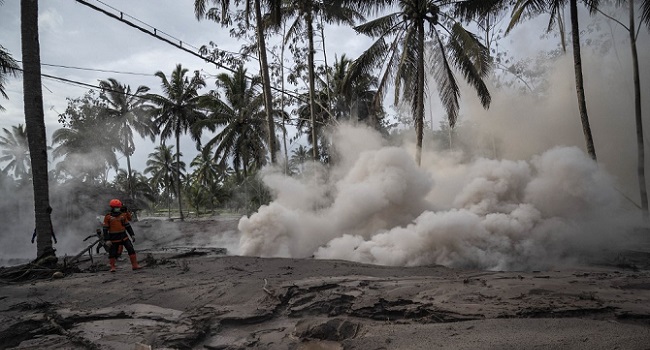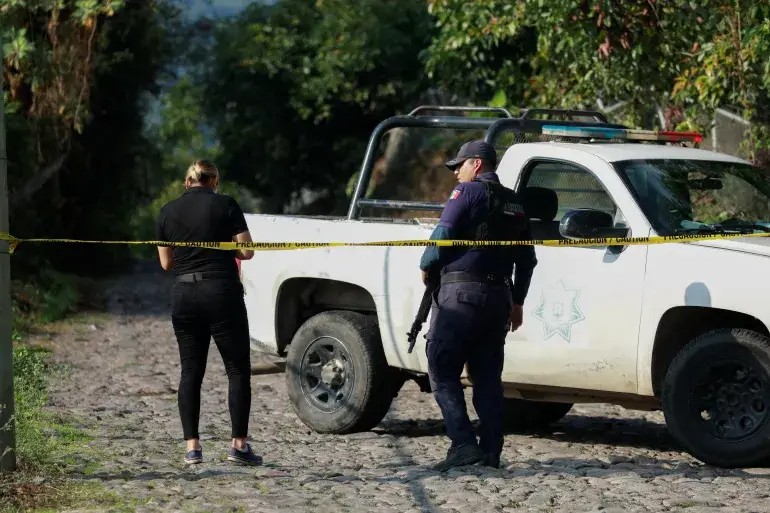Rescuers in Indonesia raced to find survivors in villages blanketed by molten ash Sunday after the eruption of Mount Semeru which left no fewer than 13 people killed and dozens injured.
Africa Daily News, New York gathered that the eruption of the biggest mountain on the island of Java caught locals by surprise on Saturday, sending thousands fleeing and forcing hundreds of families into makeshift shelters.
No fewer than 11 villages of Lumajang district in East Java were coated in volcanic ash, submerging houses and vehicles, smothering livestock, and leaving at least 900 evacuees seeking shelter in mosques, schools, and village halls.
Read Also: IS-Linked Terror Group Leader Killed In Indonesia’s Jungle
‘The death toll is now 13 people. Rescuers found more bodies,’ national disaster mitigation agency spokesman Abdul Muhari told reporters, without specifying the cause of death.
Two of the victims have been identified, he said in a later statement.
At least 57 people including two pregnant women were injured in the eruption, of whom 41 suffered burns and were hospitalised, the agency said in a press release.
President Joko Widodo on Sunday ordered a rapid emergency response to find victims and treat the injured after the scale of the disaster became clear, said state secretary Pratikno, who like many Indonesians goes by only one name.
As many as 10 trapped people were rescued from areas surrounding Lumajang, according to Muhari, as villagers and rescuers worked through the night to find anyone trapped or retrieve bodies.
Lava mixed with debris and heavy rain had already destroyed at least one bridge in Lumajang, preventing rescuers from immediately accessing the area.
But emergency services footage on Sunday showed a desolate scene in the village of Kebon Renteng swallowed by the eruption, with roofs of houses protruding from a coat of mud that destroyed them.
Rescue workers dressed in bright orange uniforms worked against a dark-grey backdrop in the village of about 11,000, now a scene of ruin with buckled buildings and fallen trees.
AFRICA DAILY NEWS, NEW YORK










